It Takes Two to Tango: Estimation of the Zero-Risk Premium Strike of a Call Option via Joint Physical and Pricing Density Modeling
Abstract
:1. Introduction
2. The Zero-Risk Premium Strike of a European Call Option
2.1. Definition of a Zero-Risk Premium Strike
2.2. Conditions on the Existence of a Zero-Risk Premium Strike
3. Joint Density Estimation Methodology
3.1. The Pricing Density as U-Shaped Perturbation of the Physical Density
3.2. The Simultaneous Calibration Procedure
3.3. From Bilateral Gamma to Tilted Bilateral Gamma
4. Numerical Results
4.1. The Pricing Performance and the Quality of Physical Extraction
4.2. The Risk Premium of a European Call Option under the Tilted Bilateral Gamma Model
4.3. Evolution of the Zero-Risk Premium Strike
5. Conclusions
Author Contributions
Funding
Institutional Review Board Statement
Informed Consent Statement
Data Availability Statement
Conflicts of Interest
Abbreviations
| BS | Black-Scholes |
| BG | Bilateral Gamma |
| Characteristic function | |
| exp | |
| Expected value | |
| European call option | |
| European put option | |
| FFT | Fast Fourier Transform |
| f | Physical density |
| F | Physical cumulative probability function |
| g | Pricing density |
| G | Pricing cumulative probability function |
| K | Strike |
| Physical measure | |
| Pricing measure | |
| r | Risk-free rate |
| R | Return on asset S |
| RMSE | Root Mean Squared Error |
| S | Asset |
| T | Maturity |
| TBG | Tilted Bilateral Gamma |
| VG | Variance Gamma |
Appendix A
Appendix B
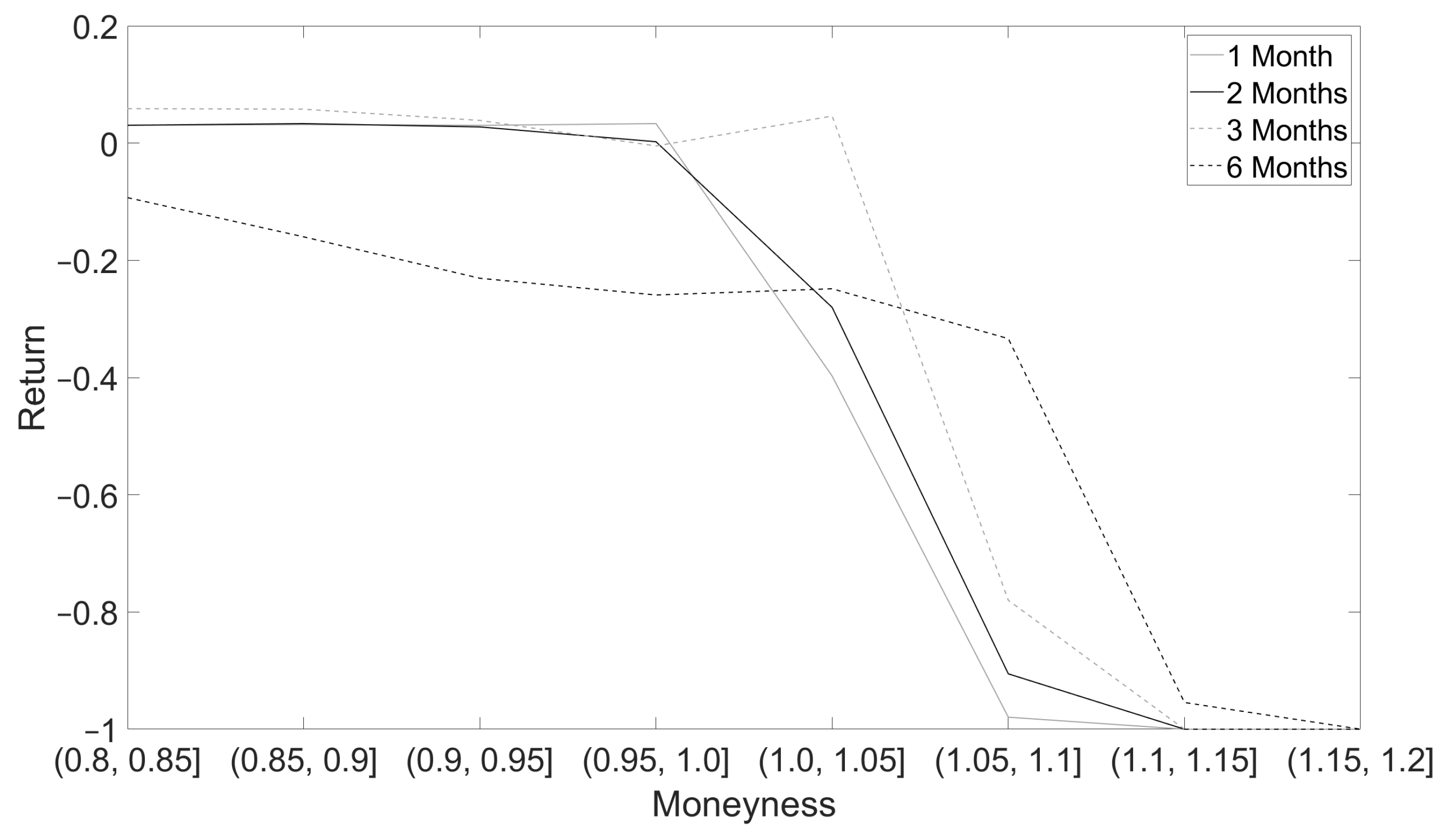
| 1 | A more extensive literature focuses on the other side of the pricing kernel puzzle, i.e., on abnormal put option returns that cannot be explained by standard option models. See, e.g., Broadie et al. (2009), Bondarenko (2014) and Bernales et al. (2020). Recently, we also see some interest in the relationship between risk premia in options and volatility in the underlying asset, see Chaudhury (2017) and Hu and Jakobs (2020). |
References
- Bakshi, Gurdip S., Dilip B. Madan, and George Panayotov. 2010. Returns of claims on the upside and the viability of U-shaped pricing kernels. Journal of Financial Economics 97: 130–54. [Google Scholar] [CrossRef]
- Bernales, Alejandro, Gonzalo Cortazar, Luka Salamunic, and George Skiadopoulos. 2020. Learning and Index Option Returns. Journal of Business & Economic Statistics 38: 327–39. [Google Scholar]
- Black, Fisher, and Myron Scholes. 1973. The pricing of options and corporate liabilities. Journal of Political Economy 18: 637–54. [Google Scholar] [CrossRef] [Green Version]
- Bondarenko, Oleg. 2014. Why are put options so expensive? Quarterly Journal of Finance 4: 145–95. [Google Scholar] [CrossRef]
- Broadie, Mark, Mikhail Chernov, and Michael S. Johannes. 2009. Understanding index option returns. The Review of Financial Studies 22: 4493–529. [Google Scholar] [CrossRef]
- Carr, Peter, and Dilip Madan. 1999. Option valuation using the fast Fourier transform. The Journal of Computational Finance 2: 61–73. [Google Scholar] [CrossRef] [Green Version]
- Chaudhury, Mo. 2017. Volatility and Expected Option Returns: A note. Economics Letters 152: 1–4. [Google Scholar] [CrossRef]
- Cochrane, John H. 2005. Asset Pricing, Revised ed. Princeton: Princeton University Press. [Google Scholar]
- Coval, Joshua D., and Tyler Shumway. 2001. Expected option returns. Journal of Finance 56: 983–1009. [Google Scholar] [CrossRef]
- Cuesdeanu, Horatio, and Jens C. Jackwerth. 2018a. The pricing kernel puzzle in forward looking data. Review of Derivatives Research 21: 394–419. [Google Scholar] [CrossRef] [Green Version]
- Cuesdeanu, Horatio, and Jens C. Jackwerth. 2018b. The pricing kernel puzzle: Survey and outlook. Annals of Finance 14: 289–329. [Google Scholar] [CrossRef] [Green Version]
- Denuit, Michel, Jan Dhaene, Marc Goovaerts, and Rob Kaas. 2005. Actuarial Theory for Dependent Risks: Measures, Orders and Models. West Sussex: Wiley. [Google Scholar]
- Harrison, Michael, and Stanley Pliska. 1981. Martingales and Stochastic Integrals in the Theory of Continuous Trading. Stochastic Processes and Their Applications 11: 215–60. [Google Scholar] [CrossRef] [Green Version]
- Hu, Guanglian, and Kris Jakobs. 2020. Volatility and Expected Option Returns. Journal of Financial and Quantitative Analysis 55: 1025–60. [Google Scholar] [CrossRef]
- Hu, Guanglian, and Yuguo Liu. 2021. The Pricing of Volatility and Jump Risks in the Cross-Section of Index Option Returns. Journal of Financial and Quantitative Analysis. forthcomming. [Google Scholar] [CrossRef]
- Küchler, Uwe, and Stefan Tappe. 2008. Bilateral Gamma distributions and processes in financial mathematics. Stochastic Processes and Their Applications 118: 261–83. [Google Scholar] [CrossRef] [Green Version]
- Madan, Dilip B., Peter P. Carr, and Eric C. Chang. 1998. The Variance Gamma process and option pricing. Review of Finance 2: 79–105. [Google Scholar] [CrossRef] [Green Version]
- Madan, Dilip B., and Wim Schoutens. 2016. Applied Conic Finance, 1st ed. Cambridge: Cambridge University Press. [Google Scholar]
- Madan, Dilip B., Wim Schoutens, and King Wang. 2020. Bilateral multiple Gamma returns: Their risks and rewards. International Journal of Financial Engineering 7: 2050008. [Google Scholar] [CrossRef]
- Madan, Dilip B., and Eugene Seneta. 1990. The Variance Gamma (V.G.) model for share market returns. The Journal of Business 63: 511–24. [Google Scholar] [CrossRef]
- McKeon, Ryan. 2019. Time Variation in Options Expected Returns. Presented at the 2019 Derivative Markets Conference; Available online: https://acfr.aut.ac.nz/__data/assets/pdf_file/0010/265339/Time-Variation-in-Option-Expected-Returns-Spring-2019.pdf (accessed on 21 October 2021).
- Merton, Robert C. 1973. Theory of rational option pricing. The Bell Journal of Economics and Management Science 4: 141–83. [Google Scholar] [CrossRef] [Green Version]
- Sichert, Tobias. 2020. The Pricing Kernel Is U-Shaped. Available online: https://papers.ssrn.com/sol3/papers.cfm?abstract_id=3095551 (accessed on 21 October 2021).
- Stoll, Hans R. 1969. The relationship between put and call option prices. The Journal of Finance 14: 801–24. [Google Scholar] [CrossRef]
- Volkmann, David. 2021. Explaining S&P500 option returns: An implied risk-adjusted approach. Central European Journal of Operations Research 29: 665–85. [Google Scholar]
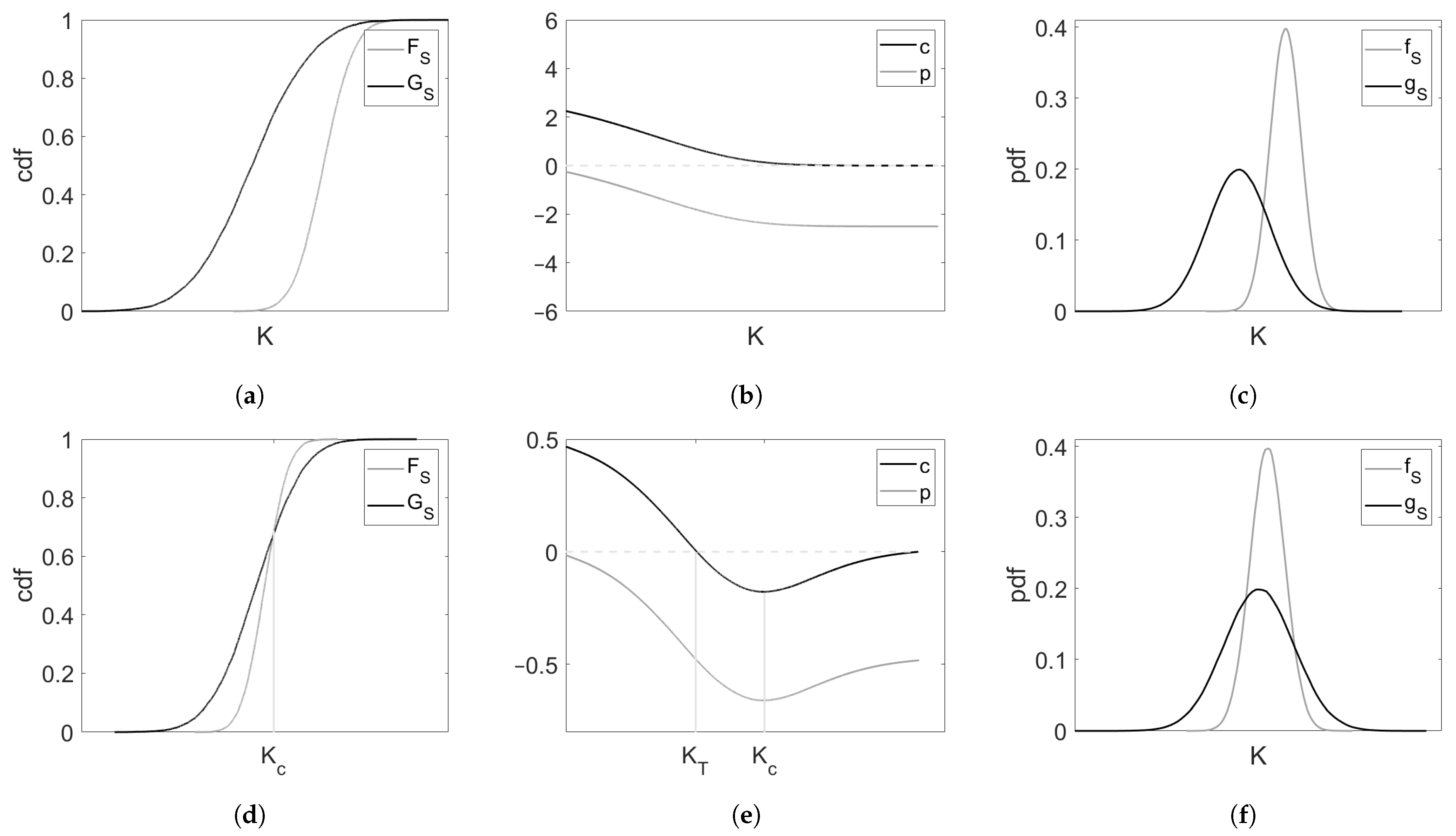
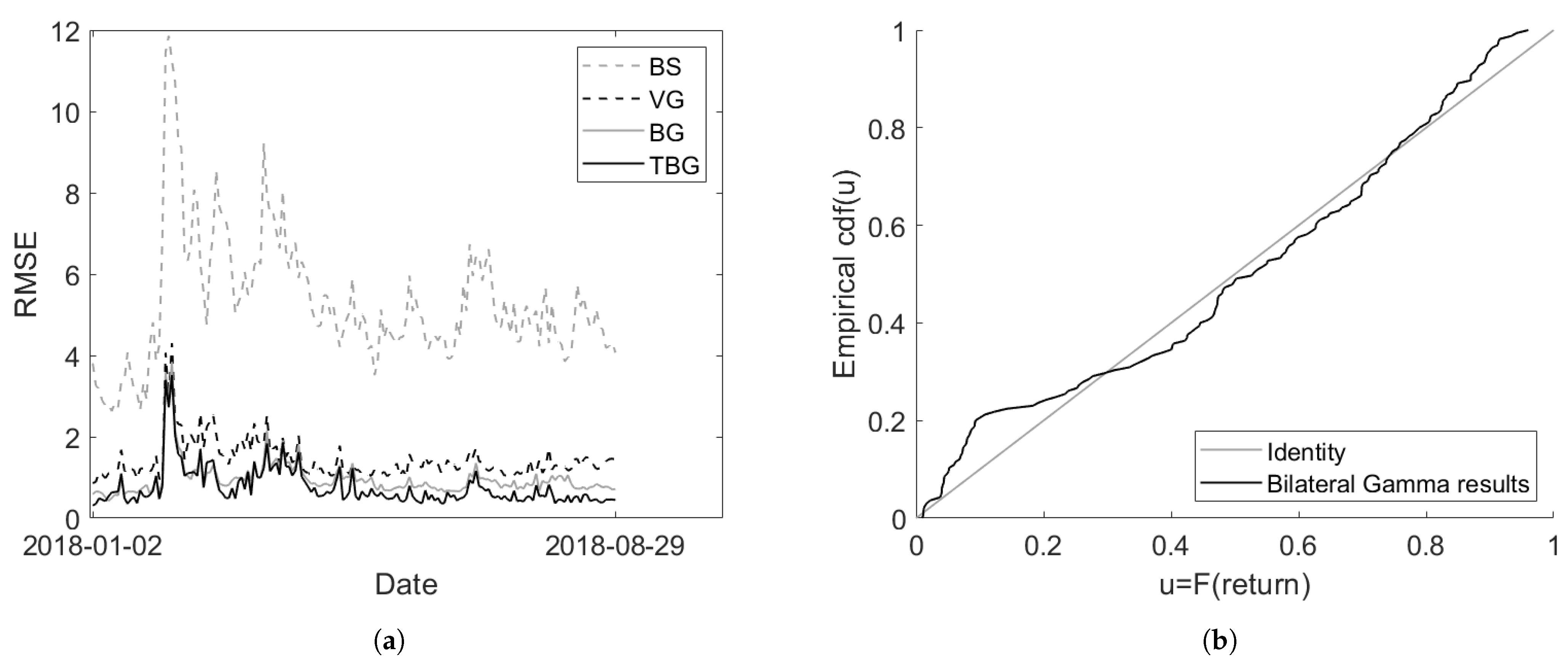

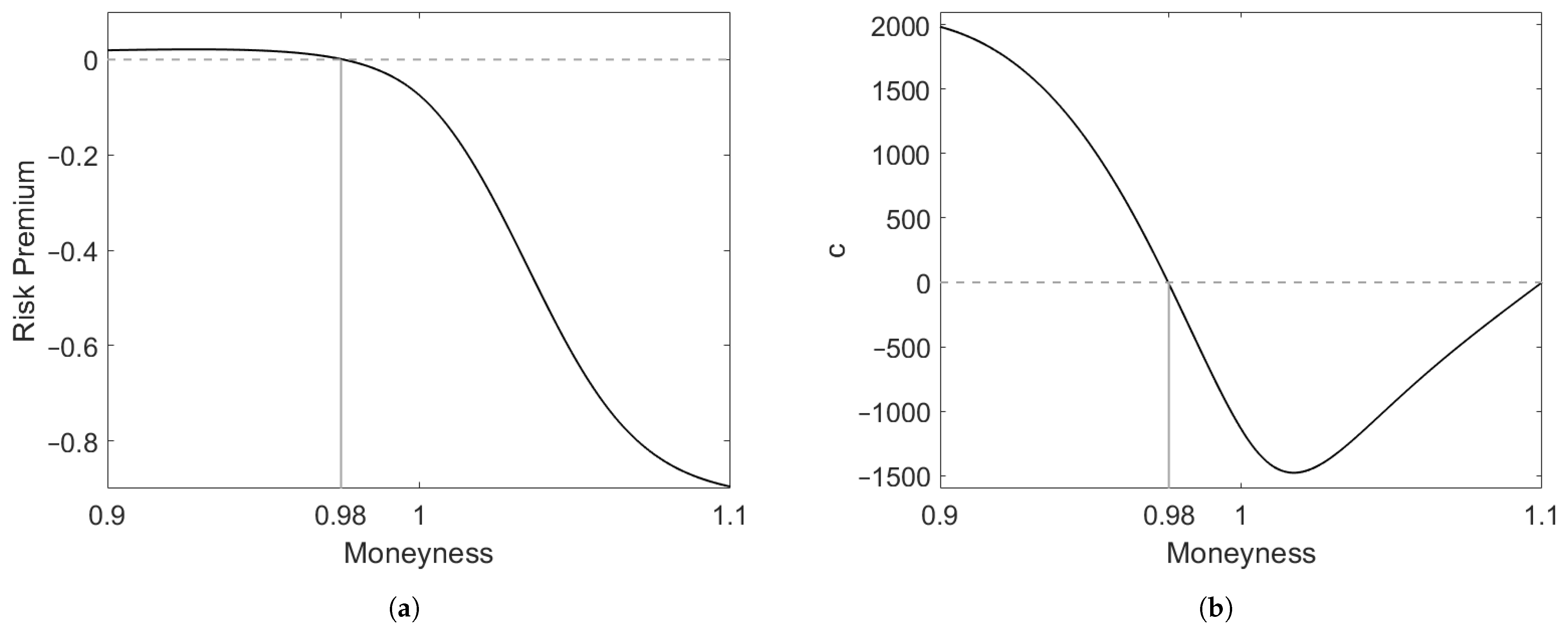

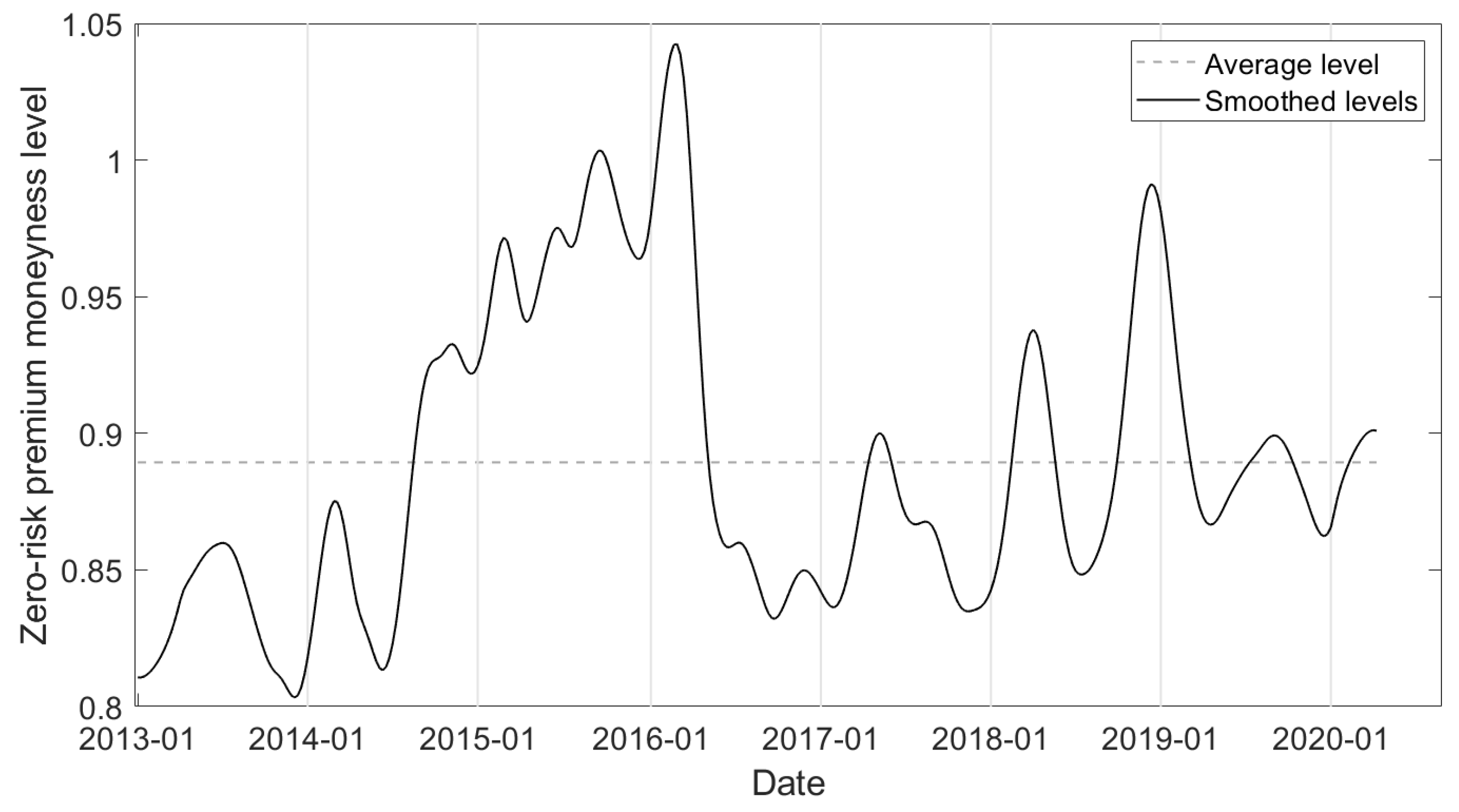
| S&P500 | DAX | ||
|---|---|---|---|
| Option Data Source | OptionMetrics | OptionMetrics | |
| Data collection | 2 January 2018–29 August 2018 | 4 January 2013–3 April 2020 | |
| Frequency | daily | weekly (every Friday) | |
| Available option surfaces | 167 | 380 | |
| Currency | USD | Euro |
| p | |||||||
|---|---|---|---|---|---|---|---|
| 15 March 2018 | 0.3387 | 0.2423 | 0.0040 | 0.0057 | 22.4030 | 7.0985 | 0.6472 |
| Time series minimum | 0.1609 | 0.0687 | 0.0009 | 0.0015 | 1.0073 | 1.0190 | 0.4411 |
| Time series average | 0.3204 | 0.2378 | 0.0032 | 0.0087 | 19.5495 | 6.0611 | 0.5689 |
| Time series maximum | 0.8142 | 0.7382 | 0.0119 | 0.0456 | 45.5198 | 27.8961 | 0.8060 |
Publisher’s Note: MDPI stays neutral with regard to jurisdictional claims in published maps and institutional affiliations. |
© 2021 by the authors. Licensee MDPI, Basel, Switzerland. This article is an open access article distributed under the terms and conditions of the Creative Commons Attribution (CC BY) license (https://creativecommons.org/licenses/by/4.0/).
Share and Cite
Höcht, S.; Madan, D.B.; Schoutens, W.; Verschueren, E. It Takes Two to Tango: Estimation of the Zero-Risk Premium Strike of a Call Option via Joint Physical and Pricing Density Modeling. Risks 2021, 9, 196. https://doi.org/10.3390/risks9110196
Höcht S, Madan DB, Schoutens W, Verschueren E. It Takes Two to Tango: Estimation of the Zero-Risk Premium Strike of a Call Option via Joint Physical and Pricing Density Modeling. Risks. 2021; 9(11):196. https://doi.org/10.3390/risks9110196
Chicago/Turabian StyleHöcht, Stephan, Dilip B. Madan, Wim Schoutens, and Eva Verschueren. 2021. "It Takes Two to Tango: Estimation of the Zero-Risk Premium Strike of a Call Option via Joint Physical and Pricing Density Modeling" Risks 9, no. 11: 196. https://doi.org/10.3390/risks9110196
APA StyleHöcht, S., Madan, D. B., Schoutens, W., & Verschueren, E. (2021). It Takes Two to Tango: Estimation of the Zero-Risk Premium Strike of a Call Option via Joint Physical and Pricing Density Modeling. Risks, 9(11), 196. https://doi.org/10.3390/risks9110196







